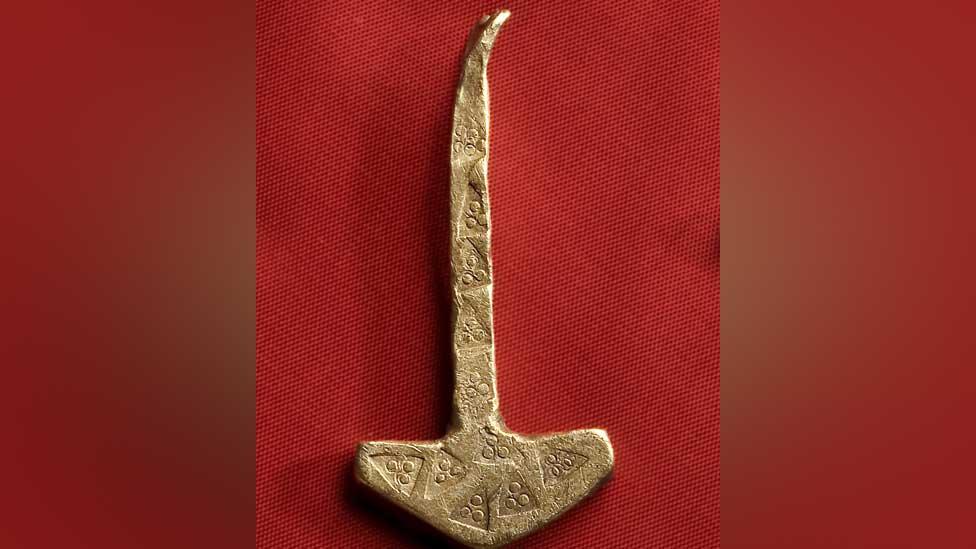Viking bronze die discovery in Watton could be worth £24k
- Published
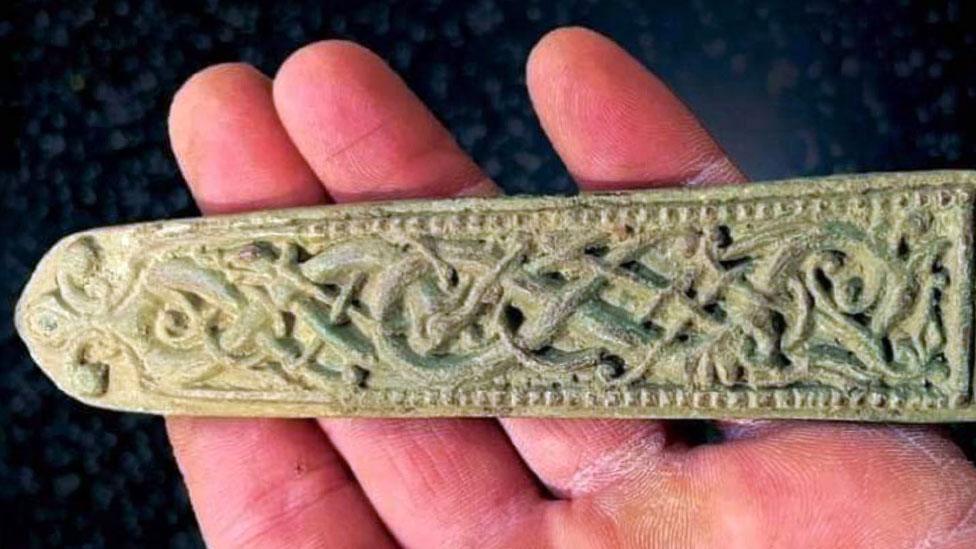
Experts believe the carvings depict creatures from Viking mythology - the world tree Yggdrasil with the monstrous serpent Nidhogg
An intricately carved bronze die which was probably used to shape the cheek or nose guards of a Viking helmet has been found by a detectorist.
Jason Jones, 44, from Norwich, discovered it in a field at Watton, Norfolk, using a back-up detector after forgetting to charge his main one.
He called his wife Lisa over and "she was speechless when she saw it".
The die will be auctioned at Noonans Mayfair, London, on 18 July with a guide price of £16,000 to £24,000.
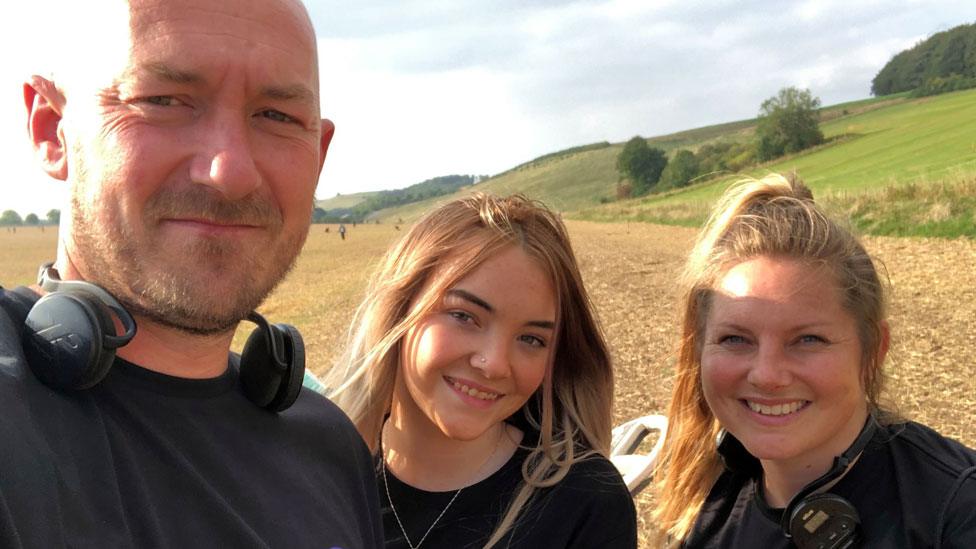
Jason Jones and his family including daughter Ela (middle) and wife Lisa (right) became hooked on metal detecting four years ago
The couple were detecting in a field which had previously yielded two medieval silver coins when Mr Jones made the discovery.
He "got a loud signal, and at a depth of just two inches found an unusual bronze object".

Metal detecting and the law
No search can begin until permission has been given by the landowner
All finds belong to the landowner
Any find in England, Wales and Northern Ireland that is more than 300 years old, made of gold or silver, or found with gold or silver artefacts, could be treasure under the 1996 Treasure Act, external
These must be reported to the appropriate county finds liaison officer, external
Source: Portable Antiquities Scheme

Mr Jones said: "Neither of us had any idea what it could be, but that evening after posting a picture on Facebook we realised it was Viking in date and notified the local archaeologist to have it recorded."
The 14cm by 2.6cm (5.5in by 1in) object was identified by an expert at a museum in Norwich.
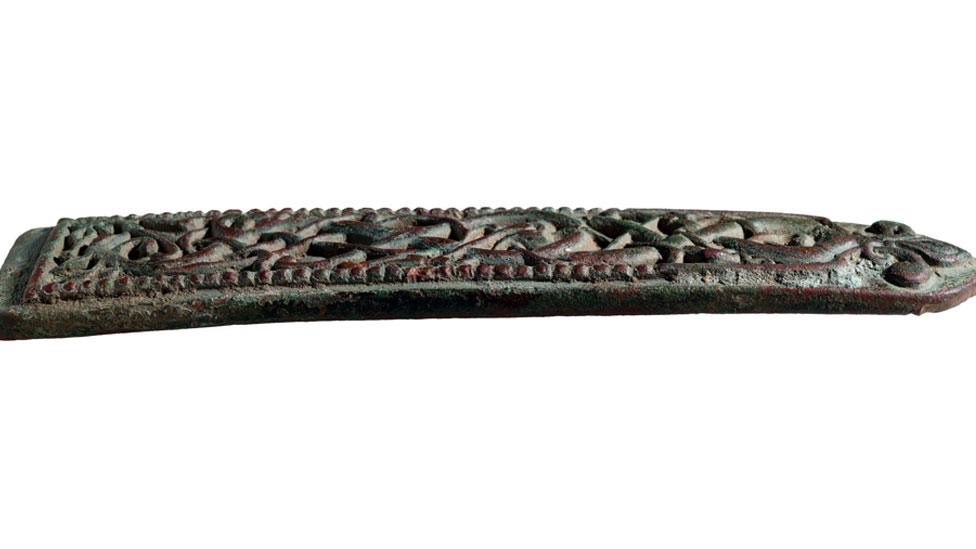
It could fetch up to £24,000 at the auction, which Mr Jones will share with the landowner
Nigel Mills, coins and artefact specialist at Noonans, said the die would have been used to create decorative motifs to be applied to a military helmet, similar to ones seen on the helmet discovered at the ship burial at Sutton Hoo, Suffolk.
"The die is used to replicate the design into a thin sheet of metal which is pressed into the die and then has the intricate design formed," he said.
"The helmet would be iron, and the decorative repousse plaque would be either copper or silver or gold, depending on the status of the recipient, and then applied to the helmet."
The 11th Century ornamentation "possibly represents the world tree Yggdrasil with the monstrous serpent Nidhogg intertwining within its roots" confirming its Viking origin.
Mr Jones bought a metal detector for his son Rio's 15th birthday four years ago and within weeks the whole family were detecting every weekend.
The construction industry worker will share any proceeds from the auction with the landowner.

Follow East of England news on Facebook, external, Instagram, external and Twitter, external. Got a story? Email eastofenglandnews@bbc.co.uk, external or WhatsApp us on 0800 169 1830
Related topics
- Published3 April 2023
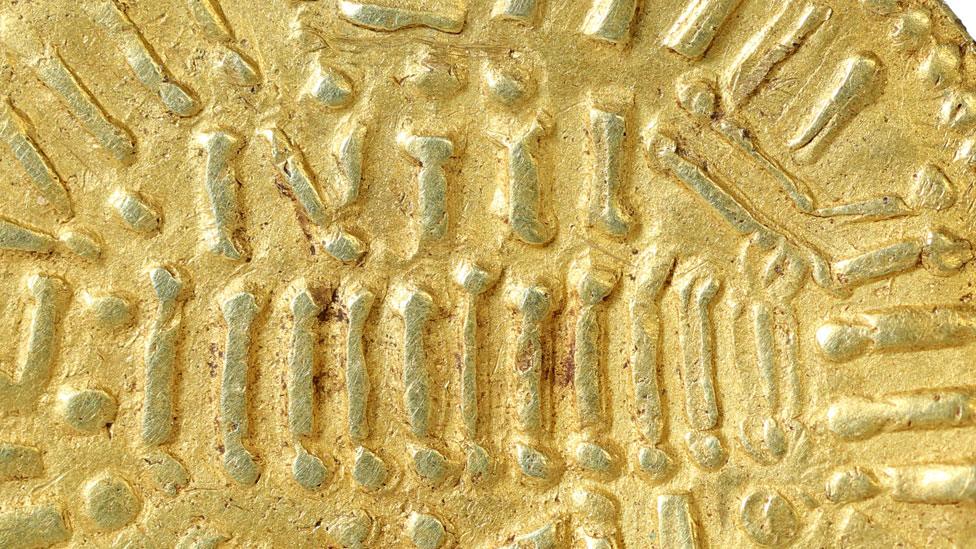
- Published7 August 2022
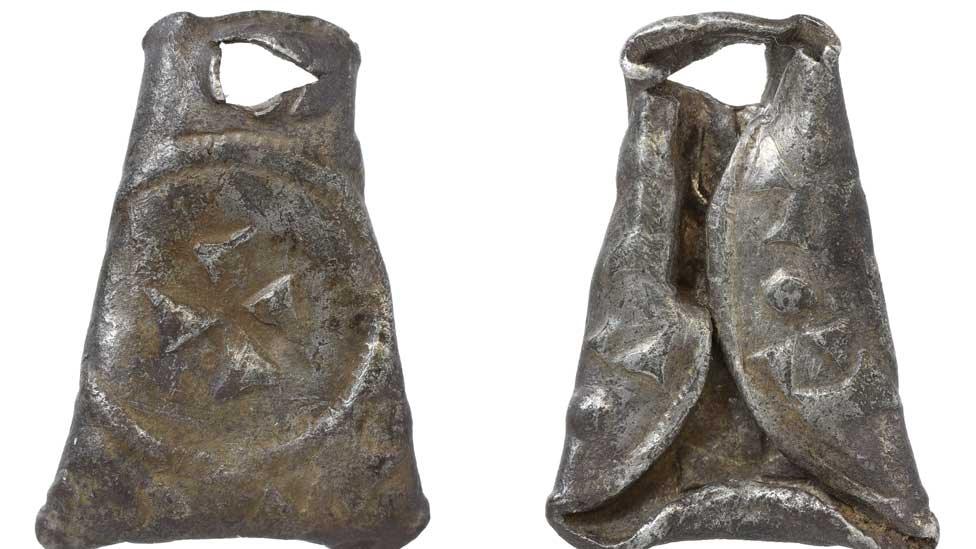
- Published11 July 2022
